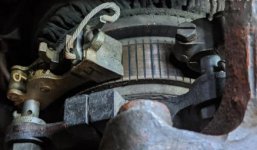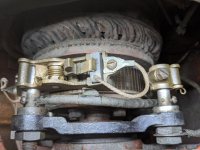Cal,
Thanks for the confirmation on the resistance measurements showing I have a 115VDC field. I do have the tandem rheostat. I removed it before taking the video to clean it up a bit. I was getting some spikes in the ohm readings when the wiper was losing contact slightly in some spots. I cleaned the rheo coils with a soft rubber eraser and light application of 600grit sand paper. The resistance measurement is now smoothly changing through the 1/2 revolution of actuation as it should. 480 ohm on the motor rheo and 640 ohm on the generator rheo.
Bill,
Thanks for the heads up on the brush spring pressure white paper on the Helwig Carbon website. I found it was an interesting read. In short there are two main factors affecting brush wear: mechanical friction and electrical erosion. Their study was conducted with 70 A / in^2 between the brush and the commutator. I measured about 0.45 in^2 contact area for the reliance large frame motor brushes and I thought I saw somewhere on this forum the motor pulls about 10A. I imagine those 10 A would be shared by at least two brushes at a time. This would give about 5A / brush.
If this is correct should we bias the brush spring pressure to the low side to minimize the mechanical friction?









